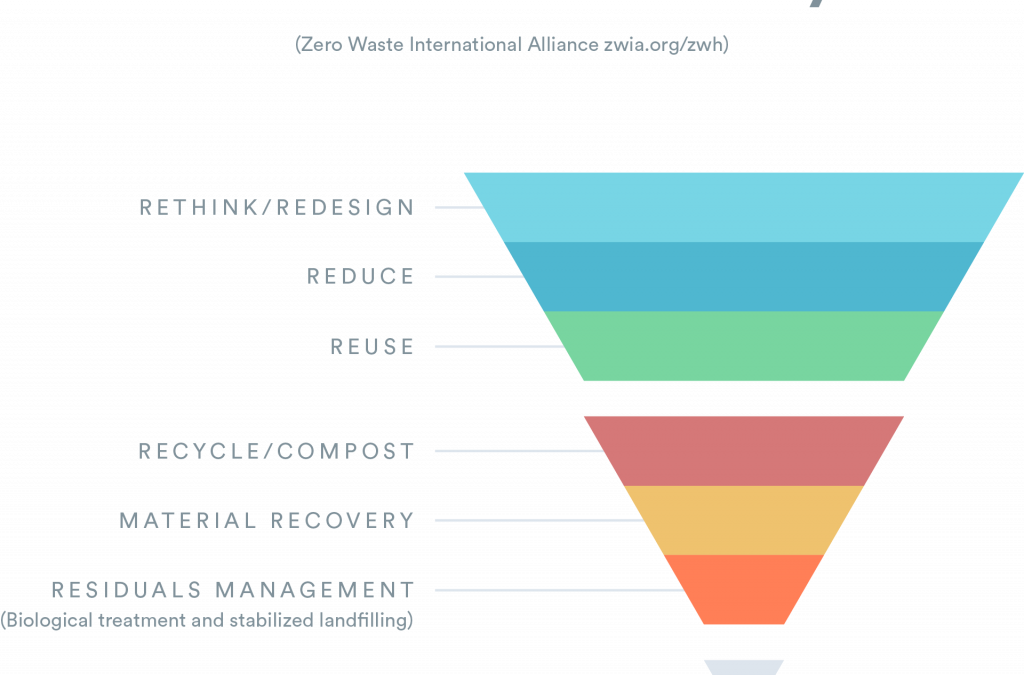This article originally appeared in our Circularity Weekly newsletter. Subscribe to the newsletter here.
The zero waste hierarchy from Zero Waste International Alliance is currently my favorite representation of the methods we can use to get from our current wasteful, linear economy to one where materials are being rethought upstream and intercepted downstream to keep them in use. In the model, we start at the top of the funnel by rethinking and redesigning our products to increase their potential for circularity. Next, and very important, we reduce our consumption. After those are all of the downstream activities that can keep materials in use longer. If all else fails, the hierarchy is instructive on how to dispose of products and materials in the best way possible. Representing upstream activities in the same hierarchy as downstream activities is one reason I’m drawn to this model.

The second layer of the hierarchy, reduction, is where I want to focus my attention today. I think reduction is both the most difficult and most important intervention that companies can participate in.
Why is reduction difficult?
Simply put, reduction only exists on the margins of corporate vocabulary and it is almost never thought of as a revenue driver. I spent enough time working in corporate America to know that the need for ever-increasing profit is almost exclusively spoken about through the lens of taking market share from competitors and/or growing the overall market. The other levers of increased profitability such as efficiency gains, new business models and waste reduction are often discussed by the sustainability or operations team, but are not often connected directly to increased profitability in a company’s quarterly or annual goals.
We see this reflected quite often in the more detailed conversations amongst corporate practitioners at circular economy events. Much of the discussion is left to how we redesign products and packaging for a future in circularity and far less of the conversation is devoted to how we simply sell less while increasing profits. Even most of the new business model conversation at events is centered on continuing to put more and more product out into the world, but just through different means, like the new rental or shared ownership model, to make sure it comes back for recycling.
Why is reduction important?
I don’t think there is a sector of the economy where reduction can be ignored. We need to reduce the manufacture of new products. We need to reduce how much food we waste. We need to reduce the amount of plastic we produce and we need to reduce how much energy we use for service industries.
As a global population, we know we are using about 1.75 earths worth of biological resources each year and we are running low on critical minerals we need to power our future economy. These two warning signs should be plenty to shift the conversation towards reduction, but it just isn’t happening yet in the ways it needs to and at the highest levels of leadership in both governments and in companies.
I admit that I don’t know how to steer the dialogue toward lower consumption business models. I wish I did. I’ll continue to try. I invite you to try with me.
I’d also love to hear from all of you on source reduction. If your company is doing this well, if you have an idea about how to steer the dialogue or if you just want to chat, please reach out to me via LinkedIn.
If you’d like to read the original source of this article please click here Visit Source

